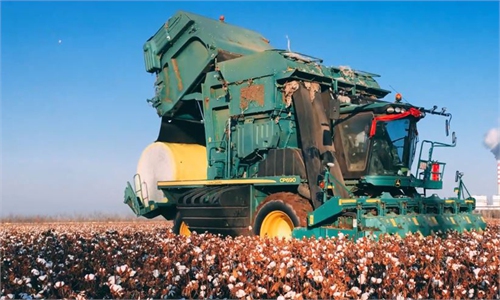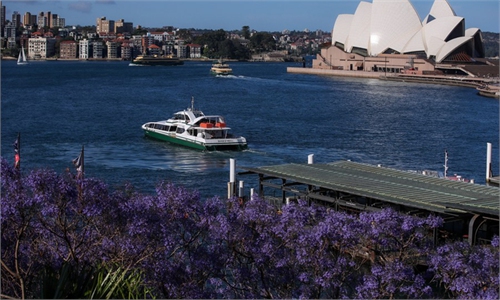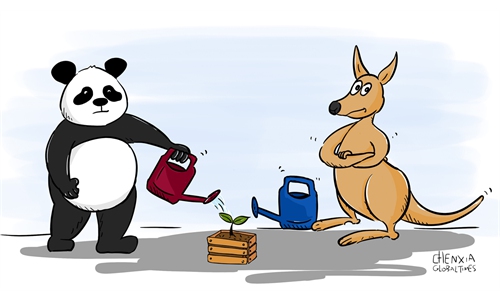With the Australia-New Zealand quarantine-free travel bubble to start within weeks, a glimmer of hope has been brought to Australia's struggling tourism sector.
As one of the worst-hit sectors during the COVID-19 pandemic, Australia's tourism gross domestic product (GDP) fell 18.9 percent to A$49.6 billion ($37.9 billion) in the financial year from July 2019 to June 2020, the lowest level since the financial year 2013-14. Tourism's contribution to the country's GDP fell from 3.1 percent to 2.5 percent.
"They were the first to be impacted by measures introduced by governments in response to COVID, and will be among the last to recover," Deloitte's Tourism and Hotel Market Outlook 2021 said
Huge shock
The biggest impact came from the international travel restrictions. Statistics from the Australian Bureau of Statistics showed that international arrivals in February 2021 witnessed an 18.5 percent decrease compared to the previous month and a 98.4 percent decrease compared to the corresponding month of the previous year, and only 8.5 percent of all arrivals were those arriving on temporary other visas.
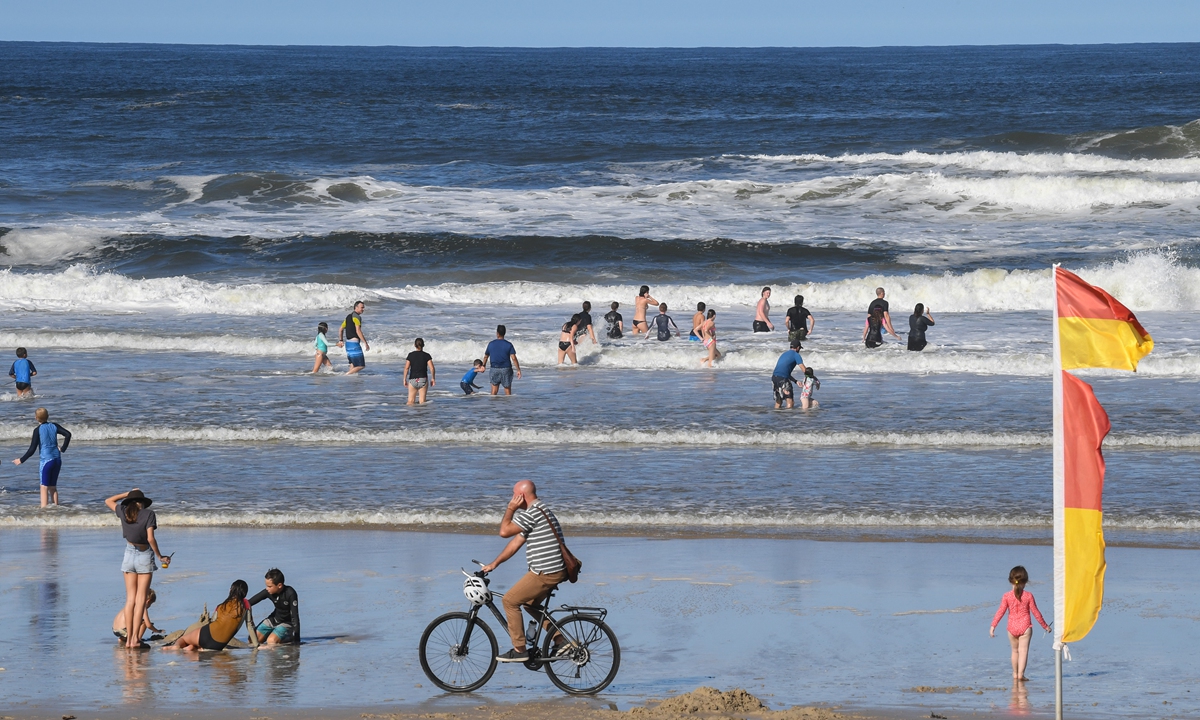
People gather at Seven Mile Beach on April 9 in Lennox Head, Australia. Photo: VCG
"Our sector, which relies almost entirely on international travel. slammed to a shut in February last year. Nine out of 10 travel businesses have been surviving on a decline in revenue of 90 percent since then and most businesses have experienced at least a 70 percent decline," said Australian Federation of Travel Agents (AFTA) Chair Tom Manwaring.As the Australian government decided to extend border lockdowns for another three months to June, hope for revival was placed on the domestic travel market.
"We need to get domestic spending primed and pumping again," said a spokesperson from the Australian Trade and Investment Commission.
The spokesperson told Xinhua in a written interview that before COVID-19, domestic tourism made up approximately 77 percent, or A$107 billion, of tourism spending.
Turn to domestic market
To encourage people to travel, the Australian government put forward a A$1.2 billion support package.
Travelers could get access to 800,000 half-price flight tickets to 13 tourism-reliant regions, subsidized by the government as part of the package.
Some local governments, including the states of New South Wales (NSW) and Victoria, also gave out vouchers to encourage residents to spend more in local businesses.
However, analysts expressed cautious optimism about how much the domestic travel market could offset the losses from the international market.
Associate professor of the University of Queensland Gabby Walters told Xinhua that the domestic market will help, but won't entirely offset the losses, given that domestic travelers tend not to spend as much money as international travelers. Possible border closures or restrictions triggered by the pandemic also make people reluctant to travel too far.
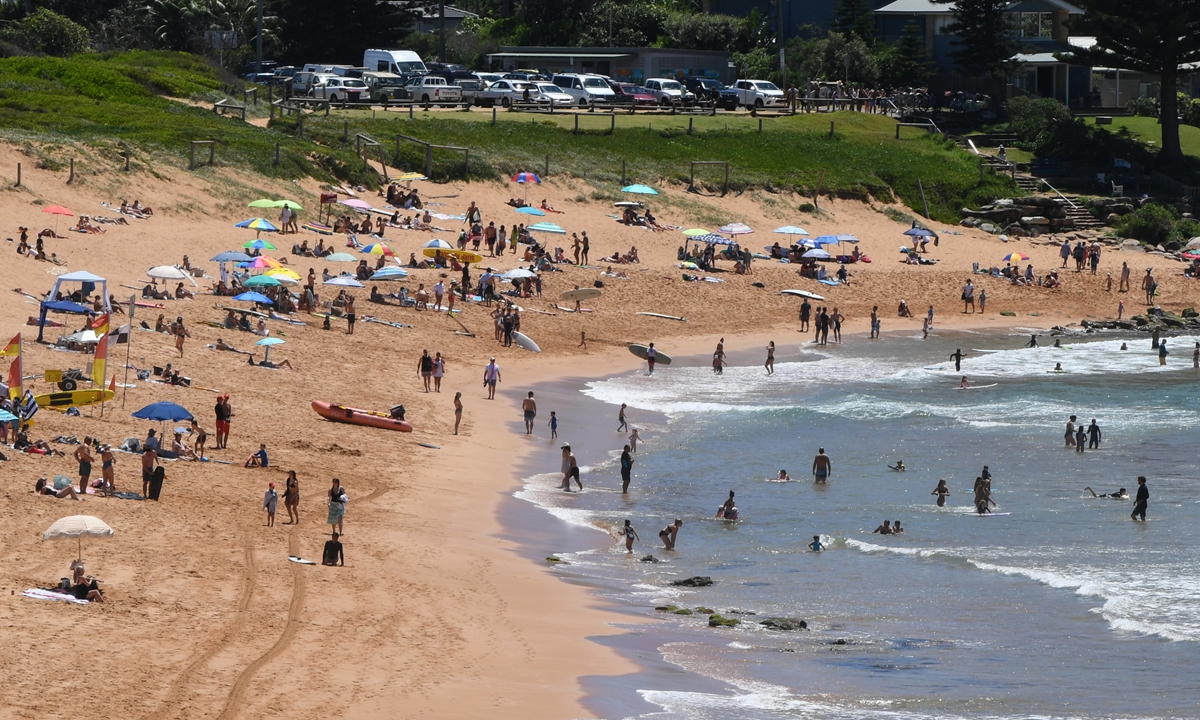
People enjoy the afternoon sunshine at Avalon Beach on January 10 in Sydney, Australia. Photo: VCG
Just before the Easter holiday, a locally transmitted COVID-19 cluster forced a regional music festival in Byron Bay, a coastal town in New South Wales, to be cancelled at the last minute.CEO of Live Performance Australia Evelyn Richardson told national broadcaster ABC that the festival had sustained a "A$10 million loss" from the cancellation.
Another heavy blow came from the end of Jobkeeper Program, a wage subsidy scheme that helped the tourism industry retain skilled and experienced staff during these difficult times.
AFTA recently put out research claiming that without a JobKeeper extension beyond March 28, eight in 10 people working in the travel and tourism sector will be out of a job and 30 percent of businesses will be forced to close, according to the Australian Financial Review.
A survey by the NSW Tourism Industry Council found that 42 percent of NSW tourism businesses would be forced to reduce staff numbers, while 53 percent reduced staff hours when JobKeeper was withdrawn.
Uncertain recovery
Deloitte said that there is evidence of recovery for the domestic travel sector through the first quarter of 2021, while international travel is not expected to recover to near pre-coronavirus levels until sometime in 2023.
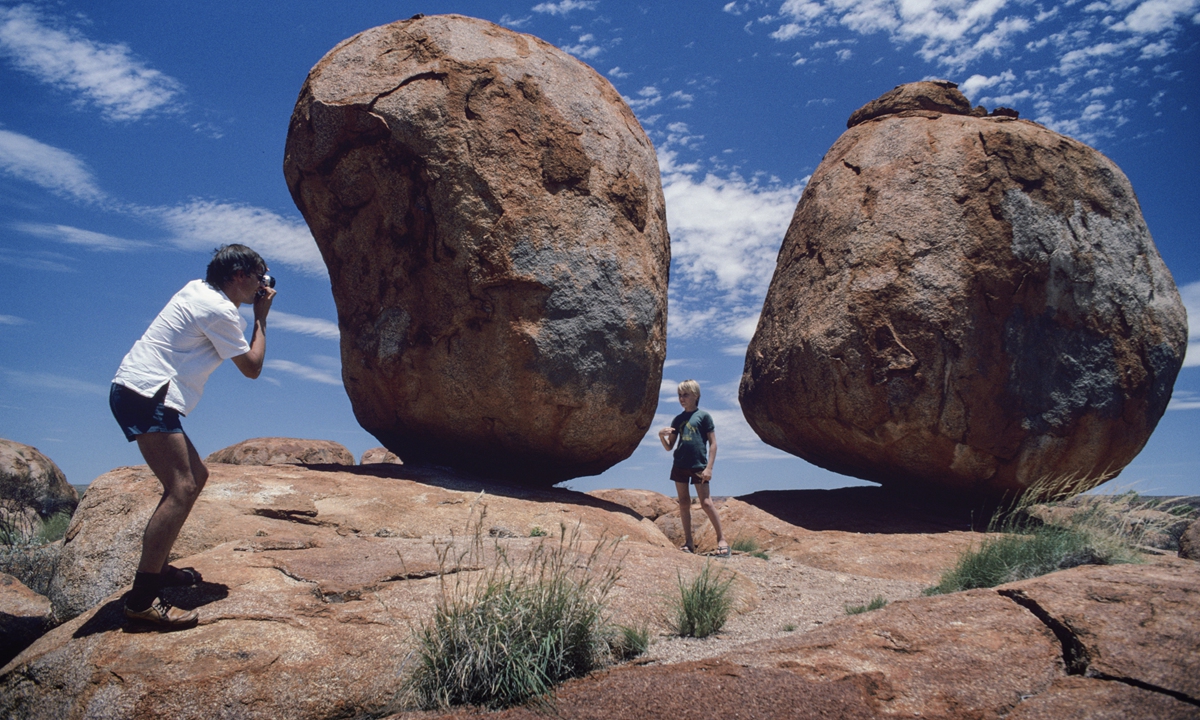
Tourists taking photographs at Devil's Marbles in the Northern Territory of Australia. Photo: VCG
"The post-COVID recovery for Australian tourism will depend on a range of factors, including local and global economic conditions, ongoing government responses to managing the health crisis, travel restrictions and consumer confidence and behavior," said Adele Labine-Romain, Deloitte Access Economics partner and Deloitte national tourism leader.Before the majority of Australians are vaccinated to similar levels of countries around the world, there may not be much change, Walters said.
"It's really hard to put a date on the exact time [for the recovery of tourism] because nobody knows. Things change every single day," the scholar said, adding, "I think people just need to travel as much as possible, be in local, buy local. Even if they can't get to a particular tour, get online and buy some product that they normally sell to overseas tourists."
